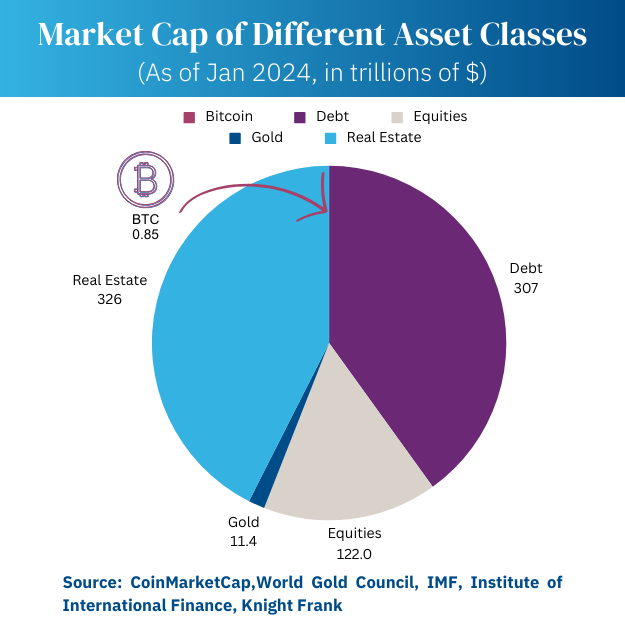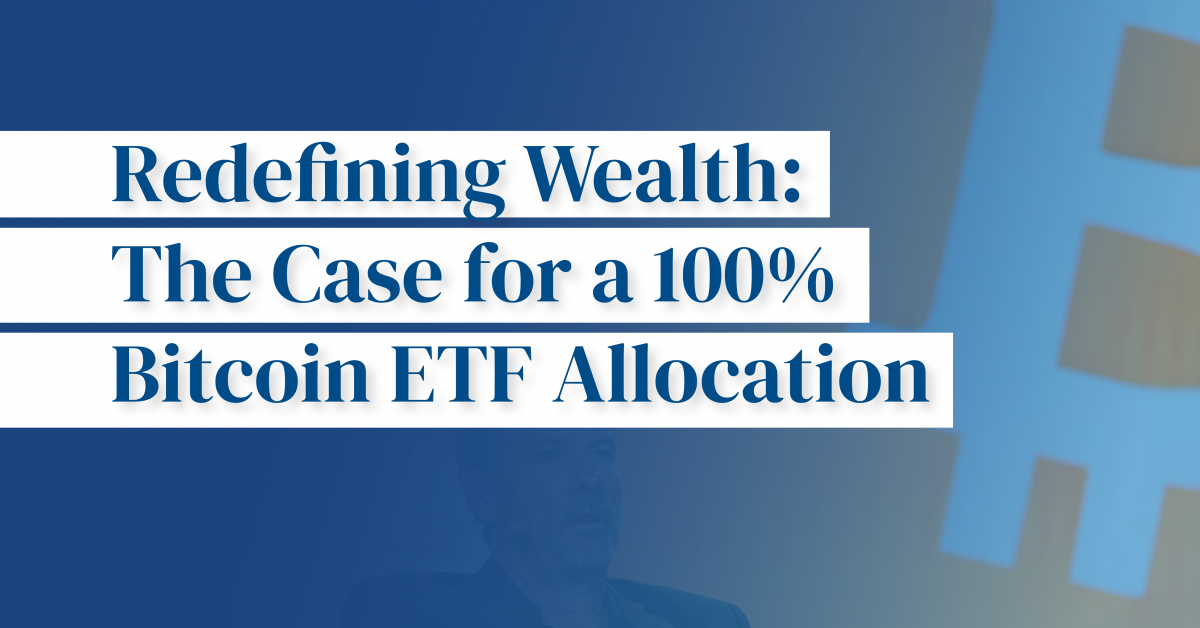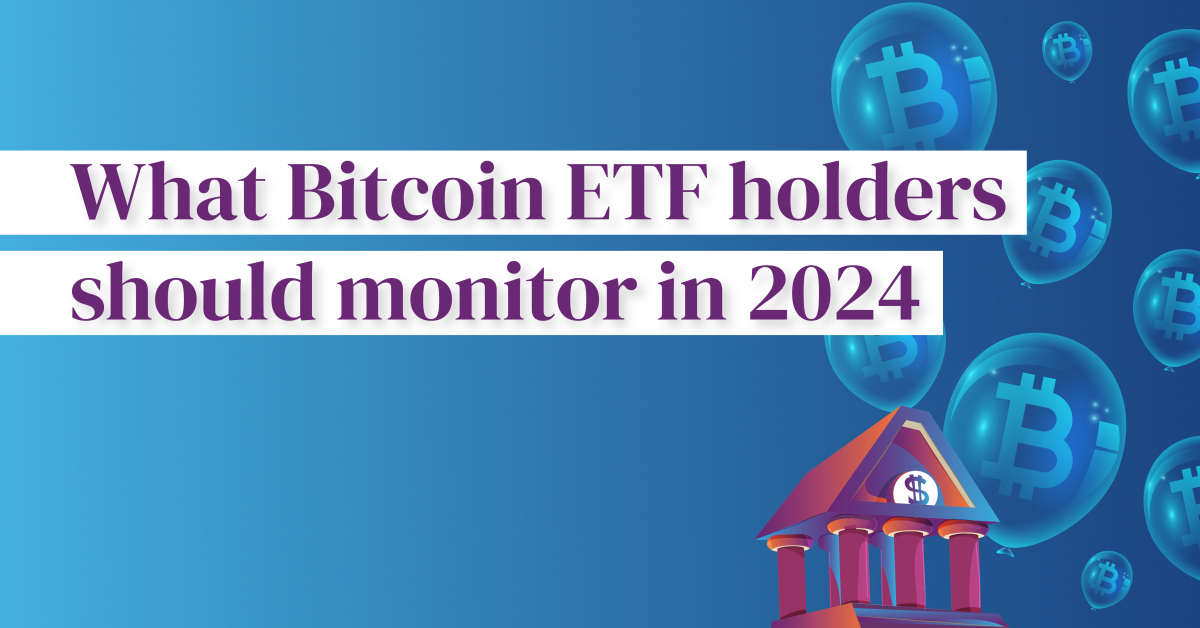In the annals of modern finance, certain investments stand out, not just for their returns, but for their ability to redefine the very fabric of the economic landscape. Consider Peter Thiel’s seminal investment in Facebook in 2004 – a $500,000 bet that burgeoned into a behemoth valued at over $100 billion. Unfortunately for Thiel, he divested too early but still managed to make an estimated 320,000% return on his investment. This is more than a success story; it’s a testament to the power of disruptive technologies in reshaping the future of investments.
In similar vein, Bitcoin emerges as a contemporary disruptor. From its enigmatic origins to its present status as a digital asset juggernaut, Bitcoin encapsulates not just a new investment opportunity, but a paradigm shift in the very nature of financial transactions. This blog aims to demystify Bitcoin’s disruptive potential and underscore why it merits a place in every modern investor’s portfolio.
See How Melanion Capital Can Guide You to Your Financial Wealth
We’ll explain everything you need to know about Bitcoin ETFs: from how they work, why investors are turning to them, and how they compare with other cryptocurrency investments.
Understanding Bitcoin’s Disruptive Potential
Bitcoin, at its essence, is a decentralized digital currency, operating independently of a central bank. Introduced in 2009 by an anonymous entity known as Satoshi Nakamoto, it challenged conventional monetary systems by offering a decentralized approach to financial transactions. But Bitcoin’s true disruptiveness lies in its underlying technology – blockchain. This distributed ledger technology ensures transparency, security, and immutability of transactions, characteristics that are fundamentally altering the financial landscape.
But what exactly makes Bitcoin disruptive? Three key aspects stand out:
- Decentralization: Unlike traditional currencies, Bitcoin operates on a peer-to-peer network, effectively removing the need for intermediaries. This decentralization not only reduces transaction costs but also increases efficiency and access.
- Limited Supply: With only 21 million Bitcoins to ever be mined, this scarcity mimics the properties of gold, making Bitcoin a potential hedge against inflation – a digital gold for the modern investor.
- Market Accessibility: Bitcoin markets operate 24/7, offering unprecedented accessibility to investors globally, unlike traditional stock markets bound by opening and closing bells.
Comparative Analysis: Bitcoin vs Traditional Investments
Comparing Bitcoin to traditional investments uncovers a dichotomy of volatility and potential. Where stocks, bonds, and real estate represent the bedrock of traditional portfolios, often prized for their stability and predictability, Bitcoin offers a different proposition – a high-risk, high-reward asset class.
While Bitcoin’s market cap is still small compared to traditional asset classes, its unique value proposition has the potential to be a better store of value.

It’s important to acknowledge Bitcoin’s price volatility; its value can swing dramatically over short periods. However, this volatility is accompanied by substantial growth potential. For instance, over the past decade, Bitcoin’s returns have outpaced traditional assets, despite periodic downturns.
That being said, let’s delve into some price calculations if Bitcoin manage to fulfil its disruptive objectives.
Scenario 1: Bitcoin flipping gold
The total market value of all the gold that has been mined is approximately $12 trillion.
To estimate the price of Bitcoin when it flips the total market value of gold, we’ll need to know the total number of Bitcoins that will ever be in circulation and then divide the total gold market value by this number. The maximum supply of Bitcoin is capped at 21 million.
If Bitcoin were to flip the total market value of gold, with all 21 million bitcoins in circulation, each Bitcoin would be valued at approximately $500,000.
Scenario 2: Bitcoin flips Real Estate
Estimating the price of Bitcoin if it were to flip the total market value of global real estate is a complex task, primarily due to the enormous value of the global real estate market. The estimated value of the global real estate market is around $300 trillion. However, this value can fluctuate based on various economic factors.
If Bitcoin were to match the total market value of the global real estate market, estimated at $280 trillion, each Bitcoin would be valued at approximately $13,000,000 considering the maximum Bitcoin supply of 21 million.
This is a hypothetical scenario and serves to illustrate the scale of the global real estate market relative to the current market cap of Bitcoin.
Scenario 3: US debt default
In a more aggressive speculative scenario, where Bitcoin is widely sought after as a safe haven in response to a U.S. debt default, its price could potentially reach unprecedented highs.
In the event of a U.S. debt default, there could be a significant loss of confidence in traditional fiat currencies and government-backed financial systems. This could drive a massive shift towards decentralized assets like Bitcoin. With its fixed supply cap of 21 million coins, Bitcoin’s scarcity could become a pivotal factor.
A scenario where traditional economic structures are questioned might lead to a surge in Bitcoin demand globally, not just from individual investors but potentially from larger institutional players seeking to hedge against fiat currency devaluation.
Considering Bitcoin’s historical price reactions to lesser events, a U.S. debt default could trigger a price increase of unprecedented scale. In this highly speculative scenario, Bitcoin’s price could potentially skyrocket to $500,000 or even approach the $1 million mark, as more investors flock to it seeking refuge from the traditional financial system’s instability.
It is crucial to emphasize that these scenarios are highly theoretical and speculative. The actual impact of such major economic events is unpredictable and could vary greatly from this scenario. As always, investments, especially in highly volatile assets like Bitcoin, should be approached with caution and informed decision-making.
See How Melanion Capital Can Guide You to Your Financial Wealth
We’ll explain everything you need to know about Bitcoin ETFs: from how they work, why investors are turning to them, and how they compare with other cryptocurrency investments.
Bitcoin ETFs: Zero is the wrong allocation
Bitcoin’s asymmetric return potential presents a unique investment opportunity that, while not without risks, demands consideration from investors. The influence of even a minimal allocation to Bitcoin could be profound, offering the potential for substantial returns. Direct investment in Bitcoin may appear intimidating due to its complex nature and the need for stringent security measures. This is precisely the niche that Bitcoin ETFs aim to fill.
A Bitcoin ETF simplifies the process, granting investors exposure to Bitcoin’s price movements without the complexities of direct purchase and storage. By tracking Bitcoin’s price, these funds offer a more conventional, regulated avenue for traditional investors to explore the possibilities inherent in Bitcoin. This makes a Bitcoin ETF not just a choice but a strategic imperative for diversified portfolios looking to capitalize on the growth of digital assets.
For those wary of the volatility and security challenges of the cryptocurrency market, Bitcoin ETFs represent a prudent entry point. They provide a shielded investment mechanism, marrying the innovative potential of cryptocurrencies with the regulatory safeguards of traditional finance. Investing in Bitcoin ETFs is not about chasing the latest trend; it’s about acknowledging the seismic shift in asset management and positioning one’s portfolio to benefit from this evolution.
In the end, an allocation of zero to Bitcoin ETFs could be a significant oversight. As the landscape of investment continues to evolve, with digital currencies becoming increasingly mainstream, the question for investors is no longer whether to allocate to Bitcoin ETFs, but how much. The potential for high returns, coupled with the increasing acceptance and regulation of Bitcoin ETFs, makes a compelling case for their inclusion in a forward-thinking investment strategy.








